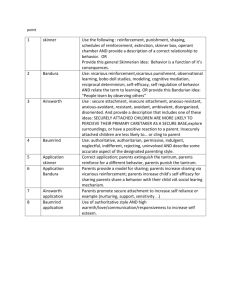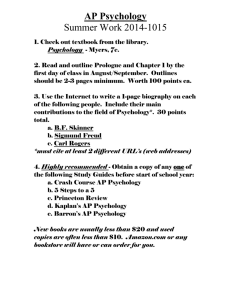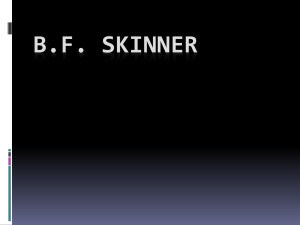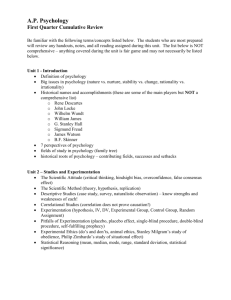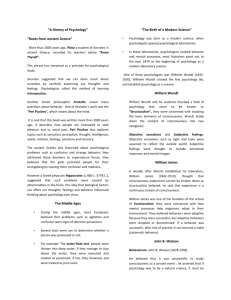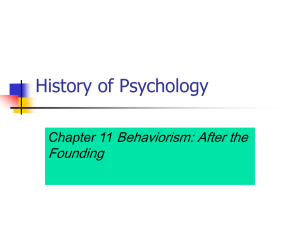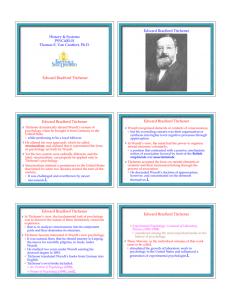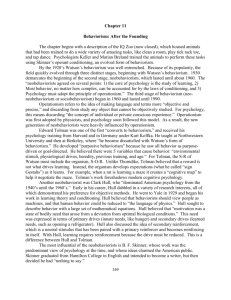Second Midterm Exam Study Guide
advertisement
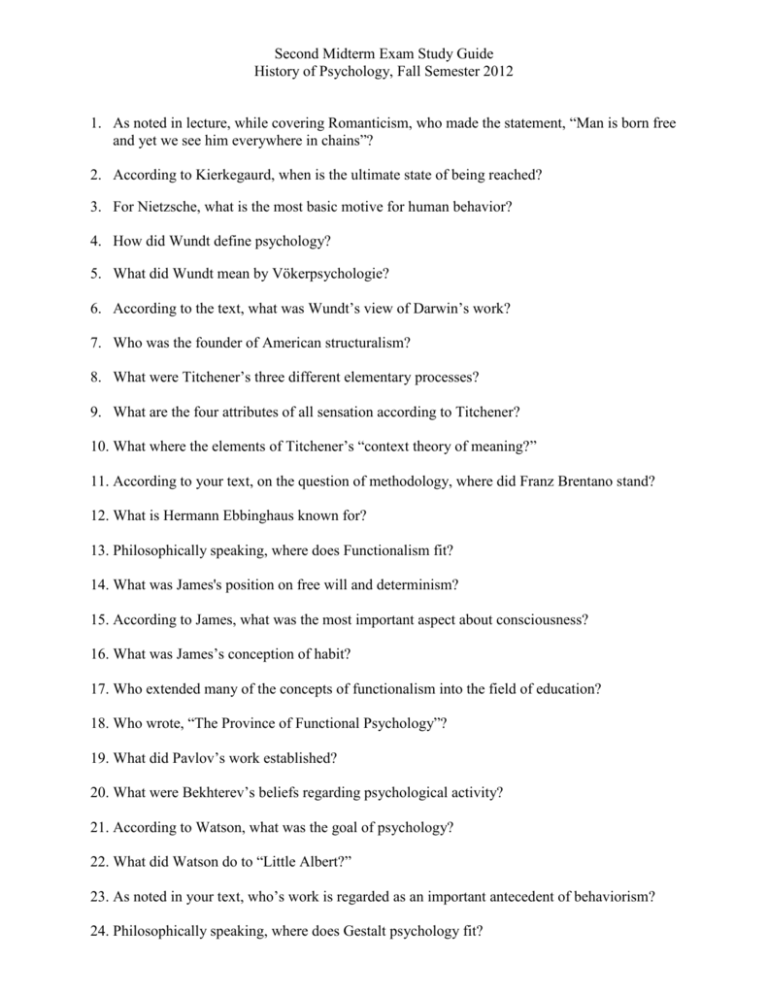
Second Midterm Exam Study Guide History of Psychology, Fall Semester 2012 1. As noted in lecture, while covering Romanticism, who made the statement, “Man is born free and yet we see him everywhere in chains”? 2. According to Kierkegaurd, when is the ultimate state of being reached? 3. For Nietzsche, what is the most basic motive for human behavior? 4. How did Wundt define psychology? 5. What did Wundt mean by Vökerpsychologie? 6. According to the text, what was Wundt’s view of Darwin’s work? 7. Who was the founder of American structuralism? 8. What were Titchener’s three different elementary processes? 9. What are the four attributes of all sensation according to Titchener? 10. What where the elements of Titchener’s “context theory of meaning?” 11. According to your text, on the question of methodology, where did Franz Brentano stand? 12. What is Hermann Ebbinghaus known for? 13. Philosophically speaking, where does Functionalism fit? 14. What was James's position on free will and determinism? 15. According to James, what was the most important aspect about consciousness? 16. What was James’s conception of habit? 17. Who extended many of the concepts of functionalism into the field of education? 18. Who wrote, “The Province of Functional Psychology”? 19. What did Pavlov’s work established? 20. What were Bekhterev’s beliefs regarding psychological activity? 21. According to Watson, what was the goal of psychology? 22. What did Watson do to “Little Albert?” 23. As noted in your text, who’s work is regarded as an important antecedent of behaviorism? 24. Philosophically speaking, where does Gestalt psychology fit? 25. Who is credited for proposing Gestalt system? 26. What was the research focus of early Gestalt psychology? 27. How does Gestalt psychology define learning? 28. What research methods were employed Gestalt psychologists? 29. How did Thorndike define reinforcement? 30. According to Hull, what must follow a response for learning to take place? 31. Who introduced the concept of intervening variables into psychology? 32. According to Tolman, how does “learning” take place? 33. How did Tolman see the function of reward? 34. Based on research with the three-pathway maze experiment, how did Tolman explain learning? 35. In defining the principle of positive reinforcement in operant conditioning, Skinner was clearly influenced by___________. 36. Who influenced Skinner? 37. How did Skinner define a reinforcer? 38. What was Skinner’s recommendation for decreasing undesirable behavior? 39. What were the basic principles of the Skinnerian version of behavior therapy? 40. Compare Hull and Skinner on what constitutes reinforcement? 41. How does Skinner label situations in which a reward is removed? 42. According to Miller and Dollard, what takes place in matched-dependent behavior? 43. How does Bandura explain vicarious reinforcement? 44. What did Bandura’s Bobo Doll studies show? 45. According to Bandura, when is direct reinforcement needed? 46. How does Bandura view the role of Self Efficacy? 47. What are three underlying components of Self-Regulation and why do they resemble early notions of the role of introspection? 48. How did Bandura explain self-reinforcement? 2
